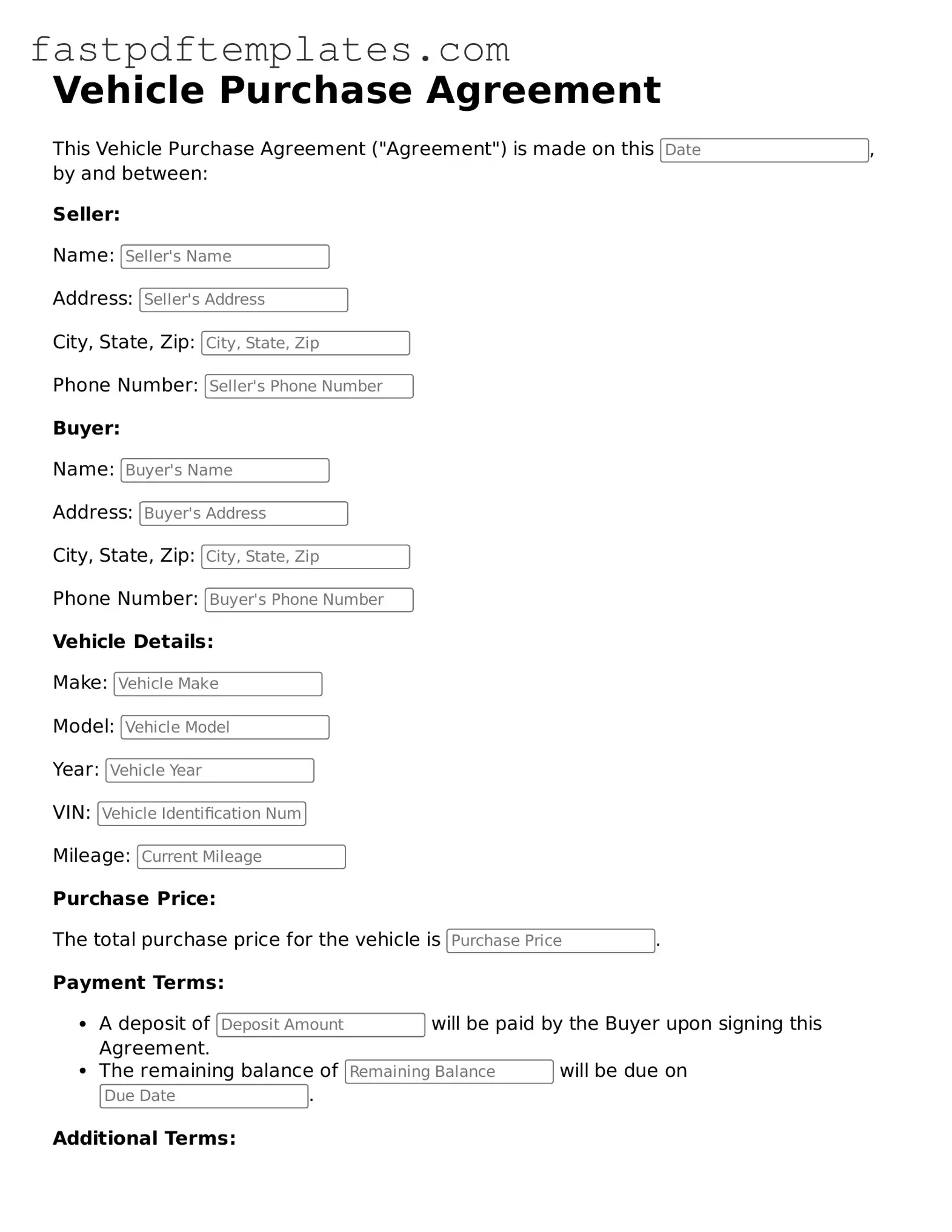The Bill of Sale is a document that serves as proof of the transfer of ownership of a vehicle. Similar to the Vehicle Purchase Agreement, it outlines the details of the transaction, including the buyer, seller, vehicle description, and sale price. Both documents are essential for establishing a legal record of the sale, ensuring that both parties understand their rights and obligations. A Bill of Sale is often used when a Vehicle Purchase Agreement is not required or when a more straightforward transaction occurs.
The Lease Agreement is another document that shares similarities with the Vehicle Purchase Agreement. While the Vehicle Purchase Agreement is focused on buying a vehicle, a Lease Agreement outlines the terms for renting a vehicle. Both documents detail the responsibilities of the parties involved, including payment terms and conditions for use. They also specify the duration of the agreement, ensuring clarity for both the lessee and lessor.
A Loan Agreement is closely related to the Vehicle Purchase Agreement, especially when financing is involved in the vehicle purchase. This document outlines the terms of borrowing money to buy the vehicle, including the loan amount, interest rate, and repayment schedule. Just as the Vehicle Purchase Agreement protects the interests of both the buyer and seller, a Loan Agreement ensures that the lender's rights are also safeguarded.
The Title Transfer Document is crucial when a vehicle is sold. This document formally transfers the ownership of the vehicle from the seller to the buyer, similar to how the Vehicle Purchase Agreement outlines the sale. Both documents require signatures from both parties and often need to be filed with the state’s Department of Motor Vehicles to complete the ownership transfer legally.
The Purchase Order is another document that resembles the Vehicle Purchase Agreement, particularly in commercial transactions. A Purchase Order is a buyer's formal request to purchase goods or services, including vehicles. It includes details like quantities, prices, and terms of sale. While it’s more commonly used in business transactions, both documents serve to confirm the buyer's intent and the seller's agreement.
The Service Agreement is similar in that it outlines the terms of service provided, which can include maintenance or repairs for a vehicle after purchase. While the Vehicle Purchase Agreement focuses on the sale, the Service Agreement details the ongoing relationship between the service provider and the vehicle owner. Both documents are vital for ensuring that expectations are clear and that both parties are protected.
Finally, the Warranty Agreement is relevant when discussing the purchase of a vehicle. This document provides assurances from the seller or manufacturer regarding the condition of the vehicle and what repairs or replacements will be covered. Like the Vehicle Purchase Agreement, it specifies terms and conditions, ensuring that the buyer knows their rights regarding any defects or issues that may arise after the purchase.
